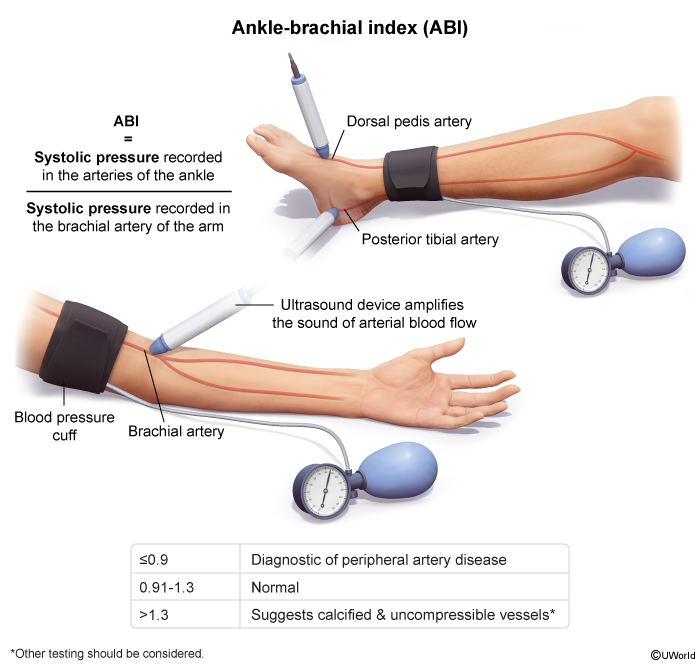Peripheral Artery Disease (PAD) And Claudication
Article Sections
Introduction
Peripheral arterial disease (PAD) results from atherosclerosis in the peripheral (noncoronary) arteries that restricts blood flow to organs and tissues. Symptomatic patients most commonly have PAD affecting the lower extremities, with involvement of the iliac, femoral, popliteal, and/or tibial arteries. Other affected arteries can include the aorta, carotid arteries, subclavian arteries, mesenteric arteries, and renal arteries. Patients with lower extremity PAD can experience wide-ranging clinical manifestations including claudication, ischemic rest pain, and gangrene with limb loss. Recognition and management of PAD is important to minimize symptoms and reduce morbidity and overall cardiovascular mortality.
Pathophysiology
The pathophysiology of PAD mimics that of atherosclerotic cardiovascular disease (ASCVD) in the coronary arteries. Atherosclerosis is a gradual process involving lipid deposition and chronic inflammation in the arterial walls, with arterial wall narrowing eventually leading to restriction of blood flow (
Continue Learning with UWorld
Get the full Peripheral Artery Disease (PAD) And Claudication article plus rich visuals, real-world cases, and in-depth insights from medical experts, all available through the UWorld Medical Library.
Figures

